Challenges of a Vice President for Enrollment Management
A Conversation with Vice President Emerita Ann Marrott, EdD
The role of a Vice President for Enrollment Management is more challenging than ever, requiring data-driven decision-making, strategic vision, and adaptability. A Vice President for Enrollment Management plays a crucial role in shaping a college or university’s student body, ensuring financial stability, and maintaining institutional reputation. However, the role comes with significant challenges, including shifting demographics, economic pressures, and evolving student expectations. In this Blog, we have conversations with Vice President Emerita Ann Marrott about the key challenges a Vice President for Enrollment Management faces.
 Introduction: Ann Marrott retired as Senior Vice President for Enrollment Management and Student Services at SUNY Ulster, a two-year public community college within the State University of New York system. With her leadership, SUNY Ulster exceeded or sustained its enrollment for a decade in the face of declining enrollment at community colleges throughout New York State. A graduate of SUNY Ulster herself, Ann began her employ at the college as director of community relations and knew the potential opportunities the college held for its students. She pursued an intense focus on data to understand threats and opportunities, accurate forecasting to track shifting demographics, and expanding and integrating services to serve students throughout their experience at the college.
Introduction: Ann Marrott retired as Senior Vice President for Enrollment Management and Student Services at SUNY Ulster, a two-year public community college within the State University of New York system. With her leadership, SUNY Ulster exceeded or sustained its enrollment for a decade in the face of declining enrollment at community colleges throughout New York State. A graduate of SUNY Ulster herself, Ann began her employ at the college as director of community relations and knew the potential opportunities the college held for its students. She pursued an intense focus on data to understand threats and opportunities, accurate forecasting to track shifting demographics, and expanding and integrating services to serve students throughout their experience at the college.
Question: What were your key responsibilities as a Vice President for Enrollment Management?
My main responsibilities at SUNY Ulster in this role were to project enrollment on which our budget was based, identify and pursue sectors in the market for potential enrollment growth and expansion, design and oversee a comprehensive college-wide retention effort, and oversee the services that supported students from initial inquiry to enrollment to successful career and transfer options. Within our enrollment one-stop and student services, I was privileged to lead more than 15 distinct services that included marketing, financial aid, registrar, athletics, campus engagement, TRIO programs, and the campus day-care center.
Question: What were your key challenges as a Vice President for Enrollment Management?
The main challenges in this role were:
- Establishing a predictive enrollment model on which the institution could rely to guide planning and budgeting. Historically, three percent enrollment increases had been used to forecast enrollment, but these assumptions were no longer valid with shifting demographics. I developed a predictive model using more than 10 data points related to our enrollment trends that proved to be highly accurate, significantly reducing stress on budgets and people.
- Rethinking and reframing admissions, recruitment and other student services from siloed transactional processes to those that integrated outreach, counseling and individual attention when students needed and wanted it. With my colleagues in a range of student support services, we successfully harnessed technology to complete data entry, process information, and communicate with students, streamlining the enrollment, payment, registration and onboarding processes. This allowed us to devote our precious human resources to directly addressing students’ concerns and issues, which was more rewarding for all involved.
- Innovating and collaborating with faculty and staff to offer program delivery options that could attract students beyond the geographic confines of the county, such as short term and/or accelerated, weekend, and online options.
- Communicating current and projected enrollment trends to the entire campus community to ensure everyone was working with the same information and could understand the role they played in influencing the success of enrollment.
Question: What factors are affecting our prospective student pool? What are the external factors affecting students’ recruitment?
 Changing demographics, including enrollment declines and increases, have been projected for the last 30 years, but another drop, referred to as the “enrollment cliff,” has been projected to take place now, as the reduced birthrates caused by the 2008-2009 recession are seen in declining number of high school graduates. In addition to this national trend, the northwest and northeast are hit the hardest, as over the last decade people have moved away from these geographical areas for other parts of the United States. The northeast is also impacted by “institutional density,” or having a significant number of colleges, many of which recruit regionally, thereby intensifying competition for a shrinking pool of students.
Changing demographics, including enrollment declines and increases, have been projected for the last 30 years, but another drop, referred to as the “enrollment cliff,” has been projected to take place now, as the reduced birthrates caused by the 2008-2009 recession are seen in declining number of high school graduates. In addition to this national trend, the northwest and northeast are hit the hardest, as over the last decade people have moved away from these geographical areas for other parts of the United States. The northeast is also impacted by “institutional density,” or having a significant number of colleges, many of which recruit regionally, thereby intensifying competition for a shrinking pool of students.
Public sentiment has shifted away from higher education’s benefits. Families are asking about the return on investment of higher education, as college costs continue to increase, no longer trusting that a college degree is a strong step toward reliable career opportunities. Vocational training and professional certifications are gaining popularity.
However, perhaps the largest factor impacting enrollment cannot yet be quantified. We have yet to fully realize the impact of dismantling the Department of Education which, as we speak, will no longer oversee student loans, and the Federal Student Aid office has been disproportionately targeted for staff reductions. Faculty and staff know how financially fragile many students are, and they will not be able to sustain cuts or delays to financial aid that keeps bills paid and food on the table.
Question: What are the top reasons admitted students don’t enroll?
I would say reasons vary by sector and by individual colleges. My colleague and fellow SALA advisor David Eaton articulated the factors influencing decisions at a four-year public university in his interview. At SUNY Ulster, we analyzed data on students who were accepted, but didn’t enroll with us. While some students chose to attend neighboring options, a majority of the reasons for our accepted students not enrolling focused on:
- Deferring or delaying enrollment to take care of more pressing day-to-day needs. For many the desire to complete a degree or certificate was there but as single parents, they needed to work to support their families and afford day care. The thought of taking on additional costs for books, materials and transportation was overwhelming;
- Uncertainty about their ability to succeed academically; and
- Unfamiliarity with all of the services available to assist them in entering and staying at the college.
Understanding these barriers to enrollment were opportunities for our student services staff to reach out and discuss options and opportunities with students. This was very much “one-to-one” recruiting requiring individual outreach, but the information gleaned instructed us on how to target our post-acceptance communications, and construct early intervention and support programs we needed to put in place to meet students where they were.
How important is it for a Vice President of Enrollment Management to have a mentor?
 A mentor is extremely valuable, as there is incredible pressure on enrollment management executives and teams at colleges and universities large and small. A mentor who is or has been in these shoes can help colleagues shift from seeing problems to possibilities, helping to survey the horizon and ensure a comprehensive view of all of the factors that contribute to enrollment are being considered. A mentor can provide guidance and advice on how to deconstruct seemingly insurmountable challenges, helping to analyze causes, effects and tease out doable next steps. In addition, a mentor can help with overall leadership development, suggesting resources to improve skills, draw on strengths, build confidence, assist with self-reflection, sharpen vision, and find common ground when none is initially apparent to influence change.
A mentor is extremely valuable, as there is incredible pressure on enrollment management executives and teams at colleges and universities large and small. A mentor who is or has been in these shoes can help colleagues shift from seeing problems to possibilities, helping to survey the horizon and ensure a comprehensive view of all of the factors that contribute to enrollment are being considered. A mentor can provide guidance and advice on how to deconstruct seemingly insurmountable challenges, helping to analyze causes, effects and tease out doable next steps. In addition, a mentor can help with overall leadership development, suggesting resources to improve skills, draw on strengths, build confidence, assist with self-reflection, sharpen vision, and find common ground when none is initially apparent to influence change.
Additional Thoughts?
One of the most exciting, and at the same time terrifying, aspects of enrollment management is that it is the culmination of so many aspects of the college experience coming together. Personally, it was enormously rewarding to focus on what the college needed to do at a high level – make sure we had met or exceeded our goals to recruit, retain, and graduate enough students to keep the college going – while working with colleagues who made all of the myriad components involved in these overarching goals actually work. At SUNY Ulster, I was privileged to work with staff and faculty who really cared about our students – a caring that went above and beyond a sterile job description. They gave so much of themselves to help each student succeed. It never got old to see students walk across the stage at graduation – head held high, family members cheering, diploma proudly raised in joyful achievement.
Thank you, Ann!



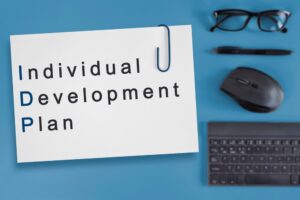 Individualized Mentoring –
Individualized Mentoring –  Flexible Coaching Formats – Flexibility is a key component of SALA’s coaching programs, which offer various coaching formats to accommodate different preferences and schedules.
Flexible Coaching Formats – Flexibility is a key component of SALA’s coaching programs, which offer various coaching formats to accommodate different preferences and schedules.
 Dean Kassel is finishing his ninth year as dean of the College of Visual and Performing Arts (CVPA) at NIU. In that time, Dean Kassel and his colleagues have seen enrollment growth, diversification of faculty and students, increases in financial resources, development of innovative programs and partnerships, and a growing impact on the arts in the region. They have established ties with institutes such as Argonne National Laboratories, partnerships with the City of DeKalb and Chicago, engaged a broad array of professional associations and industries, and have participated in critical discussions about their programs at both the state and national levels. Dean Kassel’s background is somewhat unusual and varied but has provided him with a unique perspective when taking on the tasks of academic administration. His mission as an artist, teacher, and as an administrator is to bring talented people together and help them flourish—in their teaching, research, artistry and service.
Dean Kassel is finishing his ninth year as dean of the College of Visual and Performing Arts (CVPA) at NIU. In that time, Dean Kassel and his colleagues have seen enrollment growth, diversification of faculty and students, increases in financial resources, development of innovative programs and partnerships, and a growing impact on the arts in the region. They have established ties with institutes such as Argonne National Laboratories, partnerships with the City of DeKalb and Chicago, engaged a broad array of professional associations and industries, and have participated in critical discussions about their programs at both the state and national levels. Dean Kassel’s background is somewhat unusual and varied but has provided him with a unique perspective when taking on the tasks of academic administration. His mission as an artist, teacher, and as an administrator is to bring talented people together and help them flourish—in their teaching, research, artistry and service. Comments: Strategy and negotiation. I spend most of my time devising and implementing strategies to fulfill the mission, vision and values of the university and college. Much of that revolves around securing and deploying resources—human, temporal, and fiscal. In order to implement that strategy, I am constantly negotiating with my supervisors (Provost, President, various VPs), my team (direct reports—school directors, finance director, communications and marketing director, director of Advancement, and my staff), with faculty, and of course students. I work every day to help match people’s goals and ambitions with the university and college mission, vision and values. Sometimes, that means helping people see that they are already doing that, and sometimes it means guiding people towards that alignment. The first step is often agreeing on the values—centering learners, and creating access and opportunity for that learning.
Comments: Strategy and negotiation. I spend most of my time devising and implementing strategies to fulfill the mission, vision and values of the university and college. Much of that revolves around securing and deploying resources—human, temporal, and fiscal. In order to implement that strategy, I am constantly negotiating with my supervisors (Provost, President, various VPs), my team (direct reports—school directors, finance director, communications and marketing director, director of Advancement, and my staff), with faculty, and of course students. I work every day to help match people’s goals and ambitions with the university and college mission, vision and values. Sometimes, that means helping people see that they are already doing that, and sometimes it means guiding people towards that alignment. The first step is often agreeing on the values—centering learners, and creating access and opportunity for that learning. Comments: The dean has RESPONSIBILITIES, not power. Or, if there is power, it is a soft kind of power—to persuade, cajole, guide, and sometimes warn. The dean has to shoulder the burden when time, money and people are short; but when things go well, must shift credit to the faculty, staff and students. At NIU, the college deans have collective power and work very well as a team. That’s been one of the great blessings working at NIU.
Comments: The dean has RESPONSIBILITIES, not power. Or, if there is power, it is a soft kind of power—to persuade, cajole, guide, and sometimes warn. The dean has to shoulder the burden when time, money and people are short; but when things go well, must shift credit to the faculty, staff and students. At NIU, the college deans have collective power and work very well as a team. That’s been one of the great blessings working at NIU.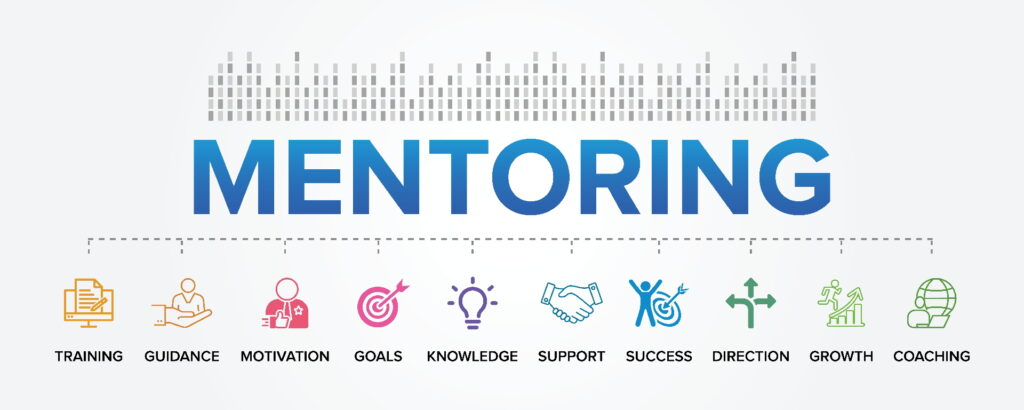


 Personalized Coaching – SALA Advisors provides personalized coaching tailored to your leadership team’s unique needs and goals. Our experienced advisors work closely with each leader to develop their strengths, address challenges, and enhance their leadership capabilities. We provide constant feedback and evaluation to ensure ongoing growth and improvement.
Personalized Coaching – SALA Advisors provides personalized coaching tailored to your leadership team’s unique needs and goals. Our experienced advisors work closely with each leader to develop their strengths, address challenges, and enhance their leadership capabilities. We provide constant feedback and evaluation to ensure ongoing growth and improvement. Investing in Your Leadership Team – SALA Advisors provides the tools and support to ensure your leaders achieve their full potential by offering comprehensive leadership development programs that cover a wide range of skills and competencies, providing opportunities for leaders to mentor and be mentored, and encouraging them to pursue professional growth opportunities, such as conferences, workshops, and advanced degrees.
Investing in Your Leadership Team – SALA Advisors provides the tools and support to ensure your leaders achieve their full potential by offering comprehensive leadership development programs that cover a wide range of skills and competencies, providing opportunities for leaders to mentor and be mentored, and encouraging them to pursue professional growth opportunities, such as conferences, workshops, and advanced degrees.
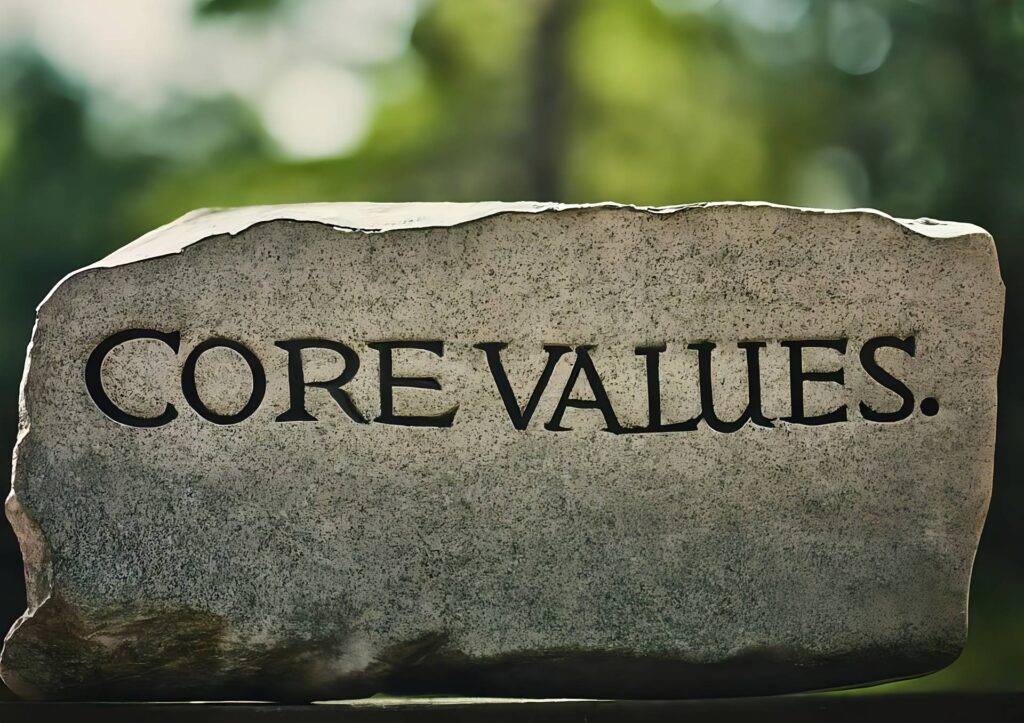
 Genuine Relationships: We prioritize building genuine relationships with our clients, connecting with them to understand their unique needs and goals. Our focus on authentic connections helps establish trust and rapport, enhancing the effectiveness of our coaching and consulting services.
Genuine Relationships: We prioritize building genuine relationships with our clients, connecting with them to understand their unique needs and goals. Our focus on authentic connections helps establish trust and rapport, enhancing the effectiveness of our coaching and consulting services. Exceptional Mentoring: We set high standards for our mentoring and consulting services, strive to deliver outstanding quality in all our interactions and commit to continuously improving our services.
Exceptional Mentoring: We set high standards for our mentoring and consulting services, strive to deliver outstanding quality in all our interactions and commit to continuously improving our services.
 Introduction: Emeritus Vice President L. David Eaton’s career as college and university administrator spans more than four decades, the first 23 years in the field of student affairs and most recently, 22 years as the Vice President for Enrollment Management at the State University of New York at New Paltz, a position he held until his retirement on December 31st, 2020.
Introduction: Emeritus Vice President L. David Eaton’s career as college and university administrator spans more than four decades, the first 23 years in the field of student affairs and most recently, 22 years as the Vice President for Enrollment Management at the State University of New York at New Paltz, a position he held until his retirement on December 31st, 2020. Comments:
Comments: 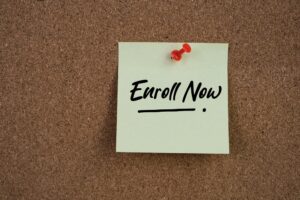 Comments: Recruiting college students in a highly competitive market has a negative impact on yield. This is primarily because today’s college bound apply to multiple colleges and will only enroll at one. Systems, like SUNY, allow applicants to apply to up to seven campuses on a single application. The Common Application promotes multiple applications as well. This inflates application numbers which, in turn, reduces yield.
Comments: Recruiting college students in a highly competitive market has a negative impact on yield. This is primarily because today’s college bound apply to multiple colleges and will only enroll at one. Systems, like SUNY, allow applicants to apply to up to seven campuses on a single application. The Common Application promotes multiple applications as well. This inflates application numbers which, in turn, reduces yield.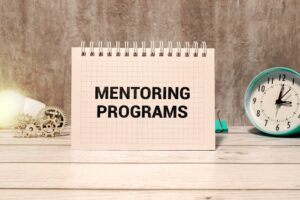 Comments: It is important for all professionals to have a mentor. Mentors influenced and enhanced our own careers from our entry level positions, through middle management, to executive level jobs. Mentors can be former colleagues, colleagues, supervisors, former supervisors, friends, and executive coaches. Twenty-two years as a vice president for enrollment management with an exceptionally successful record, provides me with the breadth of experiences that may be useful in providing mentorship and coaching to a more junior level vice president. Furthermore, in the extremely challenging emerging enrollment management environment, enrollment management vice presidents would welcome professional coaching and mentorship.
Comments: It is important for all professionals to have a mentor. Mentors influenced and enhanced our own careers from our entry level positions, through middle management, to executive level jobs. Mentors can be former colleagues, colleagues, supervisors, former supervisors, friends, and executive coaches. Twenty-two years as a vice president for enrollment management with an exceptionally successful record, provides me with the breadth of experiences that may be useful in providing mentorship and coaching to a more junior level vice president. Furthermore, in the extremely challenging emerging enrollment management environment, enrollment management vice presidents would welcome professional coaching and mentorship.
 This Blog explores the importance of mentoring for senior academic leaders, outlining key benefits, strategies, and best practices. It aims to provide institutions with insights into how the SALA Advisors mentoring program can enhance leadership capabilities, drive institutional excellence, and foster a culture of continuous improvement.
This Blog explores the importance of mentoring for senior academic leaders, outlining key benefits, strategies, and best practices. It aims to provide institutions with insights into how the SALA Advisors mentoring program can enhance leadership capabilities, drive institutional excellence, and foster a culture of continuous improvement.
 Establish Clear Objectives
Establish Clear Objectives

 A compelling vision is essential for guiding an institution toward its future goals. SALA Advisors helps you articulate a clear and inspiring vision and translate it into a concrete strategic plan.
A compelling vision is essential for guiding an institution toward its future goals. SALA Advisors helps you articulate a clear and inspiring vision and translate it into a concrete strategic plan. Comprehensive institutional planning ensures that all aspects of your institution align with your mission and vision. SALA Advisors assists in developing thorough plans that cover every facet of your institution.
Comprehensive institutional planning ensures that all aspects of your institution align with your mission and vision. SALA Advisors assists in developing thorough plans that cover every facet of your institution.


 Progress Tracking
Progress Tracking

 Developing international programs is crucial for providing students with unique academic experiences and preparing them for global careers. SALA Advisors helps institutions identify strategic international partners and navigate the complexities of international program development.
Developing international programs is crucial for providing students with unique academic experiences and preparing them for global careers. SALA Advisors helps institutions identify strategic international partners and navigate the complexities of international program development. Creating programs that provide transformative learning experiences fosters a culture of global engagement on campus. SALA Advisors helps institutions develop such programs for both students and faculty.
Creating programs that provide transformative learning experiences fosters a culture of global engagement on campus. SALA Advisors helps institutions develop such programs for both students and faculty.